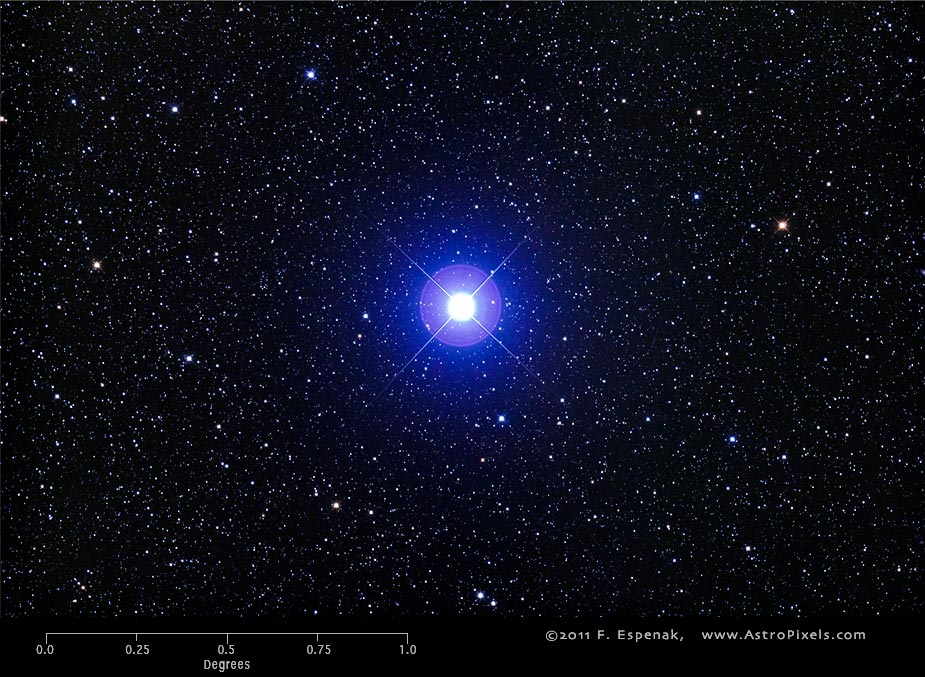Vega
Vega is visible in the summer sky in the Northern Hemisphere and has a blue-white color to it. Because of how bright it is its color is visible to us. Vega is part of the consolation Lyra (also known as the harp star) and is the brightest star in it. One Japanese story tells of the consultation Lyra that the stars Vega and Kengyu represent two people but Kengyu is a mortal and both of them fell in love with each other but once Vega's father found out he places them in the sky and separates them with the Milky Way. But on the 7th night of the 7th moon a bridge is formed reuniting the two. It is also notice that Vega is the 5th brightest visible to the Earth and is hotter then the sun. One fun fact about the star was besides the sun it was the first star to be photographed in 1850 and was the first star in 1872 to have a spectrographic image which shows the various elements in the star.

Star: Vega
Location: Right Ascension: 18h 36m 56.3s
Declination: +38 degrees 47" 01"
Chemical Makeup:
Hydrogen and Helium make up 99.5% of the star
Spectrum analysis of Hydrogen:

https://en.wikipedia.org/wiki/Hydrogen_spectral_series
Stellar Classification: A0Va: Blue tinged white sequence star that is fusing hydrogen to helium in its core

http://astropixels.com/stars/images/Vega-01w.jpg
References:
Vega. (n.d.). Retrieved September 26, 2015, from https://en.wikipedia.org/wiki/Vega
Star of the week: Vega, the Harp Star. (n.d.). Retrieved September 26, 2015, from http://earthsky.org/brightest-stars/vega-brilliant-blue-white-is-third-brightest-star
H2g2 - Vega - the Summer Sapphire Star - Edited Entry. (n.d.). Retrieved September 26, 2015, from http://h2g2.com/edited_entry/A87851172
Spectrum analysis of Hydrogen:

https://en.wikipedia.org/wiki/Hydrogen_spectral_series
Stellar Classification: A0Va: Blue tinged white sequence star that is fusing hydrogen to helium in its core
http://astropixels.com/stars/images/Vega-01w.jpg
References:
Vega. (n.d.). Retrieved September 26, 2015, from https://en.wikipedia.org/wiki/Vega
Star of the week: Vega, the Harp Star. (n.d.). Retrieved September 26, 2015, from http://earthsky.org/brightest-stars/vega-brilliant-blue-white-is-third-brightest-star
H2g2 - Vega - the Summer Sapphire Star - Edited Entry. (n.d.). Retrieved September 26, 2015, from http://h2g2.com/edited_entry/A87851172
No comments:
Post a Comment